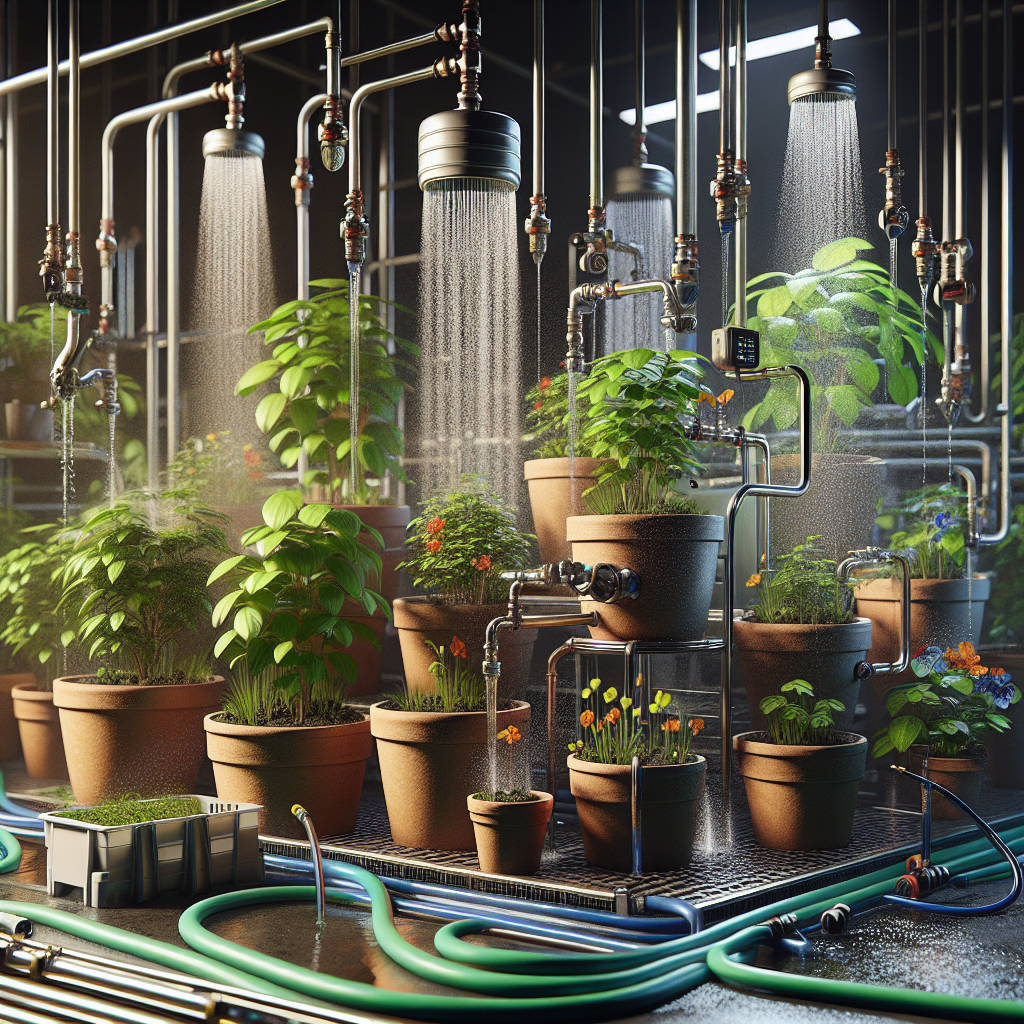Efficiently Watering Potted Plants: Slow Drip Systems for Containers
Watering plants is an essential aspect of gardening, and ensuring that potted plants receive adequate water is crucial for their growth and overall health. While hand-watering can be effective, it is time-consuming and often results in uneven moisture distribution. To address this issue, many gardeners are turning to slow drip systems for efficiently watering potted plants. These systems deliver water directly to the plant’s roots at a gradual pace, promoting healthier growth while conserving water. In this article, we will explore the benefits of slow drip systems for containers and provide tips on how to implement them effectively.
1. The Benefits of Slow Drip Systems
Slow drip systems offer several advantages over traditional watering methods:
1.1 Water Conservation: By delivering water directly to the plant’s roots rather than spraying it over the entire container, slow drip systems reduce water wastage significantly. This controlled approach ensures that only the necessary amount of water reaches the plant, avoiding excessive runoff or evaporation.
1.2 Consistent Moisture Levels: Unlike sporadic or manual watering, slow drip systems provide a consistent level of moisture throughout the container. This consistency helps prevent under or over-watering, which can lead to root rot or dehydration.
1.3 Time Efficiency: Once installed, slow drip systems require minimal effort to maintain as they are designed to operate automatically. This frees up time for other gardening tasks and ensures that plants receive regular watering even when you are away.
2. Choosing a Slow Drip System
When selecting a slow drip system for your potted plants, consider the following factors:
2.1 Container Size and Shape: Different containers have varied watering requirements based on their size and shape. Ensure that your chosen system can accommodate your specific container needs by providing enough coverage and distribution throughout.
2.2 Water Source Accessibility: Depending on your setup, you may need to consider whether the slow drip system will be connected to a hose, water tank, or other water sources. Choose a system that aligns with your existing infrastructure for easy installation and maintenance.
2.3 Adjustable Flow Rate: Opt for a slow drip system that allows you to adjust the flow rate of water. This feature ensures plants with different moisture needs receive their required amount of hydration without causing waterlogging or drought stress.
3. Implementing Slow Drip Systems Effectively
To maximize the benefits of slow drip systems, follow these tips:
3.1 Proper Placement: Position the emitters or drippers near the base of each plant, ensuring that water is directly delivered to the root zone. Avoid placing them too close to the stem, as this can cause stem rot or other issues.
3.2 Mulching: Apply a layer of organic mulch around your potted plants to conserve moisture and limit weed growth, allowing your slow drip system to work more efficiently.
3.3 Regular Check-ups: Although slow drip systems are designed for automatic operation, it is essential to regularly inspect and maintain them. Monitor water flow, check for clogs or leaks in tubes or emitters, and adjust as necessary.
3.4 Seasonal Adjustments: Different seasons require varying levels of hydration for potted plants. Adjust your slow drip system accordingly to cater to changing weather conditions and plant requirements.
4. Additional Considerations
While slow drip systems offer numerous benefits, it is important to remember that they are not suitable for all plant species or growing situations. Some plants prefer drier soil conditions or may be better suited for alternative watering methods such as soaking systems or wicking beds.
It is also essential to monitor your plants’ overall health regularly by observing their foliage, growth patterns, and response to watering regimes. Adjustments may be necessary depending on individual plant needs and environmental factors.
In conclusion, utilizing slow drip systems for watering potted plants is an efficient and effective way to promote healthy growth while conserving water. By providing consistent moisture levels and reducing wastage, these systems offer a convenient solution for busy gardeners. Proper selection, placement, and maintenance are key to maximizing the benefits of slow drip systems. With careful implementation, your potted plants can thrive with optimal hydration and minimal effort.













